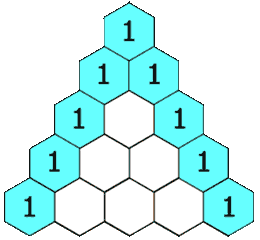|
|
马上注册,结交更多好友,享用更多功能^_^
您需要 登录 才可以下载或查看,没有账号?立即注册
x
本帖最后由 Seawolf 于 2019-9-15 08:50 编辑
- Given a non-negative integer numRows, generate the first numRows of Pascal's triangle.
-

- In Pascal's triangle, each number is the sum of the two numbers directly above it.
- Example:
- Input: 5
- Output:
- [
- [1],
- [1,1],
- [1,2,1],
- [1,3,3,1],
- [1,4,6,4,1]
- ]
- import java.math.BigInteger;
- class Solution {
- public List<List<Integer>> generate(int numRows) {
-
- List <List<Integer>> re = new ArrayList<>();
- for(int i = 0; i< numRows; i++){
-
- List <Integer> array = new ArrayList<>();
-
- for(int j = 0; j<= i; j++){
-
- int num = Integer.parseInt(mul(i-j+1,i).divide(mul(1,j)).toString());
- array.add(num);
- }
- re.add(array);
-
- }
- return re;
-
- }
-
- public BigInteger mul(int start, int end){
-
- BigInteger sum = BigInteger.ONE;
-
- for(int i = start; i<= end; i++){
- BigInteger num = new BigInteger(String.valueOf(i));
- sum = sum.multiply(num);
- }
-
- return sum;
- }
- }
- class Solution {
- public List<List<Integer>> generate(int numRows) {
-
- List <List<Integer>> re = new ArrayList<>();
- if(numRows == 0) return re;
- List <Integer> array = new ArrayList<>();
-
- array.add(1);
- re.add(array);
-
- for(int i = 1; i < numRows; i++){
-
- List<Integer> pre = re.get(i-1);
-
- List<Integer> cur = new ArrayList<>();
-
- cur.add(1);
-
- for(int j = 1; j < i ; j++){
-
- cur.add(pre.get(j) + pre.get(j-1));
- }
-
- cur.add(1);
-
- re.add(cur);
- }
- return re;
- }
- }
|
|
 ( 粤ICP备18085999号-1 | 粤公网安备 44051102000585号)
( 粤ICP备18085999号-1 | 粤公网安备 44051102000585号)